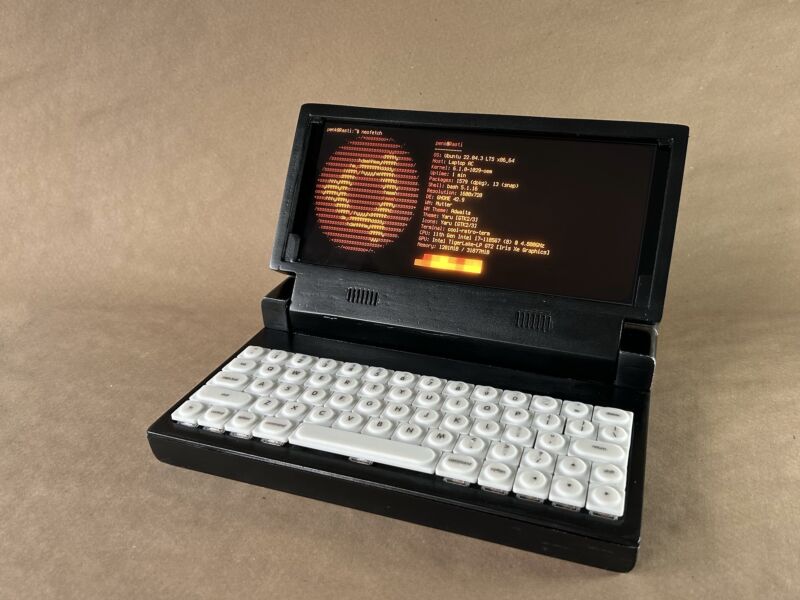
If I had to figure out what to do with the insides of a Framework 13 laptop I had lying around after today, I might not turn it into a strange but compelling “Slabtop” this time.
No, I think that, having seen Penk Chen’s remarkable project to fit Framework parts into a kind of modern restyling of the Grid Compass laptop, I would have to wait until Chen posts detailed build instructions for this project… and until I had a 3D printer… and could gather the custom mechanical keyboard parts. Sure, that’s a lot harder, but it’s hard to put a price on drawing unnecessary attention to yourself while you chonk away on your faux-used future laptop.
The Rasti Computer, which Chen writes is “derived from the German compound word ‘Rasterrahmen’ (grid + framework),” has at its core the mainboard, battery, and antennae from the highly modular and repairable first-generation Framework laptop. It takes input from the custom keyboard Chen designed for the chassis, with custom PCB and 3D-printed keycaps and case. It sends images to a 10.4-inch QLED 1600×720 display, and it all fits inside a bevy of 3D-printed pieces with some fairly standard hex-head bolts. Oh, and the hinges from a 2012 13-inch MacBook pro, though that’s possibly negotiable.
-
Rear view of the Rasti Computer, with “a touch of silver dry brushing [that] added the beat-up metal look.”
-
Semi-exploded view of the Rasti Computer.
-
You can, of course, run Windows on this device, if you like. But it might feel dissonant to put so much custom work in to run a stock OS.
Chen’s project derives from, and pays tribute to, the Grid Compass (styled “GRiD” by its maker, GRiD Systems Corp.). The Compass was probably (again, probably) the first clamshell-style laptop made. It saw use by NASA’s Space Shuttle program, as well as by military and other entities needing a laptop that was both compact and throw-it-at-a-wall durable. It had 256KB of memory by default (less than half the amount Bill Gates didn’t say you should ever need), a 320×240 pixel screen, and an Intel 8086 processor. Some models contained a 1,200bps modem. It cost more than $8,000 in 1982, or almost $25,000 today.
We have it on good word from some resident vintage computer collectors that the Compass remains a rare and expensive item to get. Rebuilding a Framework mainboard into a modern-day Grid-like doesn’t seem particularly cheap, depending on your 3D printer setup, or lack thereof. Nor is it likely to be easy, given a glimpse at how it goes together. But it will give you a unique portable and conversation piece, one that runs programs beyond Grid-OS.
You can read more about the Grid Compass at Cooper Hewitt, the firm where Compass designer Bill Moggridge worked as design director from 2010 until his 2011 passing. If you remember bubble memory, it’s a dip back into that genial trauma. Hackaday, where we first saw the Rasti project, wrote up a similarly Compass-inspired laptop, the GRIZ Sextant, with a Raspberry Pi at its core.
